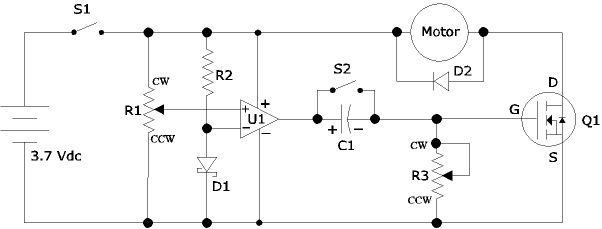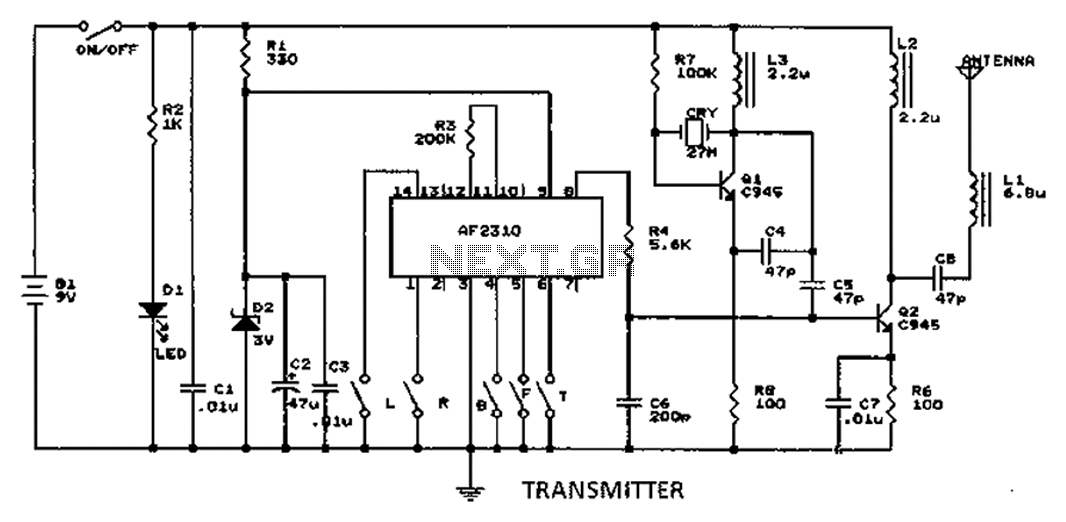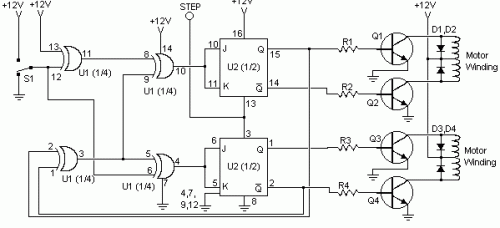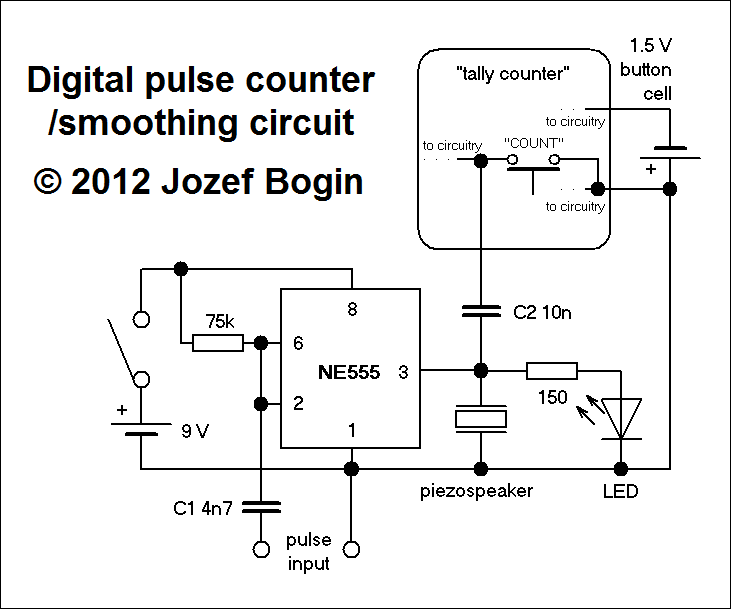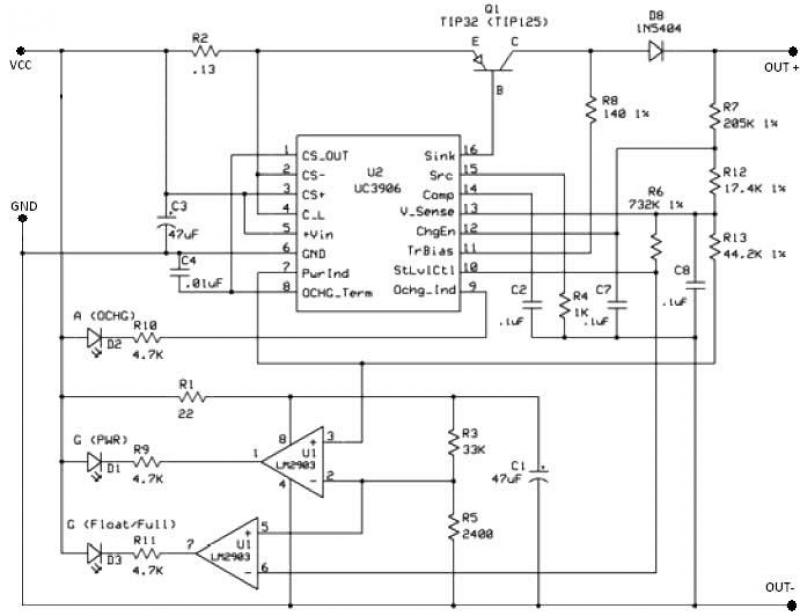
Automatic Room light Control With Bi Directional Visitor Counter
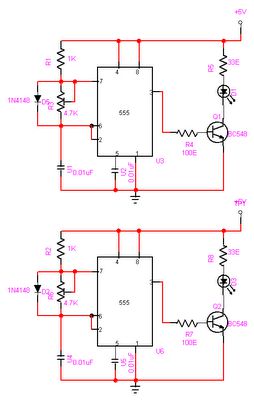
The objective of this project is to create a controller-based model that counts the number of individuals entering a specific room and activates the lighting accordingly. This is achieved through the use of sensors that detect the current number of occupants. In modern times, there is an increasing demand for automated appliances, driven by an elevated standard of living, which has led to a pressing need for circuits that simplify daily life. The infrared (IR) transmitter emits a modulated 38 kHz IR signal, while a TSOP1738 infrared sensor is employed at the receiver end. The output of the sensor goes high when an interruption occurs, returning to low after a duration determined by the circuit's capacitor and resistor, approximately one second. A CL100 transistor triggers an IC555 configured as a monostable multivibrator. Input is provided to Port 1 of the microcontroller, with Port 0 designated for the 7-segment display and Port 2 utilized for relay control to turn the lights on and off. The LTS 542 (common anode) is used for the 7-segment display. When the relay receives voltage, the light activates, and it turns off when the counter reaches zero. A reset button is included to reset the microcontroller. This circuit diagram illustrates how a 555 timer IC is configured as a basic monostable multivibrator, which changes state upon triggering and returns to its original state after a specified time delay. The circuit operates through a negative pulse applied to pin 2, which triggers an internal flip-flop that disables pin 7’s discharge transistor, allowing capacitor C1 to charge via resistor R1. The output at pin 3 goes high during this charging phase. Once C1 charges to approximately 2/3 of Vcc, the flip-flop triggers again, bringing the output low and activating pin 7’s discharge transistor to discharge C1 to ground. The result is a pulse at pin 3 with a width determined by the product of R1 and C1 (t = R1C1). The IR transmission circuit generates the modulated 36 kHz IR signal, with the IC555 on the transmitter side producing a 36 kHz square wave. The preset is adjusted to achieve a 38 kHz output signal, approximately 1.4k, which will cause the output of the sensor to go low when it detects the 38 kHz IR signal.
This project integrates various electronic components to create an efficient visitor counting and room lighting control system. The microcontroller serves as the central processing unit, managing inputs from the infrared sensor and controlling outputs to the relay and 7-segment display. The system operates by detecting movement through the IR sensor, which is sensitive to interruptions in the emitted 38 kHz signal. When a person enters the room, the interruption is detected, and the microcontroller increments the count displayed on the 7-segment display.
The monostable multivibrator configuration of the IC555 ensures that each detection event results in a precise timing pulse, which facilitates accurate counting and prevents multiple counts from a single interruption. The use of a relay allows for high-power applications, such as lighting, to be controlled by the low-power microcontroller output. The reset button provides a manual method to clear the count, enabling the system to be reused in different scenarios without manual intervention.
Overall, this circuit exemplifies the application of basic electronic principles in creating a practical solution for modern living, enhancing convenience through automation while maintaining simplicity in design.The objective of this project is to make a controller based model to count number of persons visiting particular room and accordingly light up the room. Here we can use sensor and can know present number of persons. In today`s world, there is a continuous need for automatic appliances with the increase in standard of living, there is a sense of urg
ency for developing circuits that would ease the complexity of life. The IR transmitter will emit modulated 38 kHz IR signal and at the receiver we use TSOP1738 (Infrared Sensor). The output goes high when the there is an interruption and it return back to low after the time period determined by the capacitor and resistor in the circuit.
I. e. around 1 second. CL100 is to trigger the IC555 which is configured as monostable multivibrator. Input is given to the Port 1 of the microcontroller. Port 0 is used for the 7-Segment display purpose. Port 2 is used for the Relay Turn On and Turn off Purpose. LTS 542 (Common Anode) is used for 7-Segment display. And that time Relay will get Voltage and triggered so light will get voltage and it will turn on. And when counter will be 00 that time Relay will be turned off. Reset button will reset the microcontroller. Microcontroller based Visitor Counter. This circuit diagram shows how a 555 timer IC is configured to function as a basic monostable multivibrator. A monostable multivibrator is a timing circuit that changes state once triggered, but returns to its original state after a certain time delay.
It got its name from the fact that only one of its output states is stable. It is also known as a one-shot`. In this circuit, a negative pulse applied at pin 2 triggers an internal flip-flop that turns off pin 7 ²s discharge transistor, allowing C1 to charge up through R1. At the same time, the flip-flop brings the output (pin 3) level to high`. When capacitor C1 as charged up to about 2/3 Vcc, the flip-flop is triggered once again, this time making the pin 3 output low` and turning on pin 7 ²s discharge transistor, which discharges C1 to ground.
This circuit, in effect, produces a pulse at pin 3 whose width t is just the product of R1 and C1, i. e. , t=R1C1. IR Transmission circuit is used to generate the modulated 36 kHz IR signal. The IC555 in the transmitter side is to generate 36 kHz square wave. Adjust the preset in the transmitter to get a 38 kHz signal at the o/p. around 1. 4K we get a 38 kHz signal. Then you point it over the sensor and its o/p will go low when it senses the IR signal of 38 kHz. 🔗 External reference
This project integrates various electronic components to create an efficient visitor counting and room lighting control system. The microcontroller serves as the central processing unit, managing inputs from the infrared sensor and controlling outputs to the relay and 7-segment display. The system operates by detecting movement through the IR sensor, which is sensitive to interruptions in the emitted 38 kHz signal. When a person enters the room, the interruption is detected, and the microcontroller increments the count displayed on the 7-segment display.
The monostable multivibrator configuration of the IC555 ensures that each detection event results in a precise timing pulse, which facilitates accurate counting and prevents multiple counts from a single interruption. The use of a relay allows for high-power applications, such as lighting, to be controlled by the low-power microcontroller output. The reset button provides a manual method to clear the count, enabling the system to be reused in different scenarios without manual intervention.
Overall, this circuit exemplifies the application of basic electronic principles in creating a practical solution for modern living, enhancing convenience through automation while maintaining simplicity in design.The objective of this project is to make a controller based model to count number of persons visiting particular room and accordingly light up the room. Here we can use sensor and can know present number of persons. In today`s world, there is a continuous need for automatic appliances with the increase in standard of living, there is a sense of urg
ency for developing circuits that would ease the complexity of life. The IR transmitter will emit modulated 38 kHz IR signal and at the receiver we use TSOP1738 (Infrared Sensor). The output goes high when the there is an interruption and it return back to low after the time period determined by the capacitor and resistor in the circuit.
I. e. around 1 second. CL100 is to trigger the IC555 which is configured as monostable multivibrator. Input is given to the Port 1 of the microcontroller. Port 0 is used for the 7-Segment display purpose. Port 2 is used for the Relay Turn On and Turn off Purpose. LTS 542 (Common Anode) is used for 7-Segment display. And that time Relay will get Voltage and triggered so light will get voltage and it will turn on. And when counter will be 00 that time Relay will be turned off. Reset button will reset the microcontroller. Microcontroller based Visitor Counter. This circuit diagram shows how a 555 timer IC is configured to function as a basic monostable multivibrator. A monostable multivibrator is a timing circuit that changes state once triggered, but returns to its original state after a certain time delay.
It got its name from the fact that only one of its output states is stable. It is also known as a one-shot`. In this circuit, a negative pulse applied at pin 2 triggers an internal flip-flop that turns off pin 7 ²s discharge transistor, allowing C1 to charge up through R1. At the same time, the flip-flop brings the output (pin 3) level to high`. When capacitor C1 as charged up to about 2/3 Vcc, the flip-flop is triggered once again, this time making the pin 3 output low` and turning on pin 7 ²s discharge transistor, which discharges C1 to ground.
This circuit, in effect, produces a pulse at pin 3 whose width t is just the product of R1 and C1, i. e. , t=R1C1. IR Transmission circuit is used to generate the modulated 36 kHz IR signal. The IC555 in the transmitter side is to generate 36 kHz square wave. Adjust the preset in the transmitter to get a 38 kHz signal at the o/p. around 1. 4K we get a 38 kHz signal. Then you point it over the sensor and its o/p will go low when it senses the IR signal of 38 kHz. 🔗 External reference

